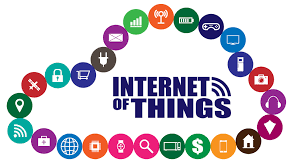IoT devices communicate with each other and with the cloud using various network protocols specifically designed for IoT applications. These protocols enable efficient and reliable communication while considering the constraints of IoT devices, such as limited power, processing capabilities, and network bandwidth. Here are some commonly used network protocols for IoT communication:
- MQTT (Message Queuing Telemetry Transport): MQTT is a lightweight publish-subscribe messaging protocol that is widely used in IoT applications. It is designed to minimize network bandwidth and device power consumption. MQTT uses a broker-based architecture, where devices publish messages to a broker, and other devices subscribe to receive those messages. It is well-suited for low-power devices and unreliable network connections.
- CoAP (Constrained Application Protocol): CoAP is a lightweight application-layer protocol designed for constrained IoT devices and networks. It follows a client-server model and is based on the RESTful architecture. CoAP uses the UDP protocol for communication, making it suitable for resource-constrained devices that operate on low-power networks. It provides efficient message exchanges with features like request/response, observe, and block-wise transfers.
- HTTP (Hypertext Transfer Protocol): Although not specifically designed for IoT, HTTP is widely used for IoT communication, particularly when interacting with web-based services. It follows a client-server model and uses the request-response paradigm. HTTP provides a standard set of methods (GET, POST, PUT, DELETE) for communication, making it easy to integrate IoT devices with existing web technologies.
- Zigbee: Zigbee is a wireless communication protocol designed for low-power, low-data-rate applications. It operates on the IEEE 802.15.4 standard and uses a mesh networking topology. Zigbee is commonly used in home automation, smart lighting, and other IoT applications that require short-range communication with low power consumption.
- Bluetooth: Bluetooth is a wireless technology designed for short-range communication between devices. Bluetooth Low Energy (BLE) is particularly popular for IoT applications due to its low power consumption. BLE enables devices to communicate directly or operate in a hub-and-spoke network topology. It is commonly used in wearable devices, healthcare applications, and proximity sensing.
- LoRaWAN: LoRaWAN (Long Range Wide Area Network) is a low-power, wide-area networking protocol designed for long-range communication. It supports low data rates and provides long-range coverage with low power consumption. LoRaWAN is suitable for IoT applications that require long-range connectivity, such as smart agriculture, asset tracking, and smart cities.
- NB-IoT (Narrowband IoT): NB-IoT is a cellular communication standard specifically designed for IoT applications. It operates in licensed spectrum, providing wide-area coverage and reliable connectivity. NB-IoT is optimized for low-power devices, offering long battery life and improved signal penetration. It is commonly used in applications like smart metering, asset tracking, and industrial monitoring.
- AMQP (Advanced Message Queuing Protocol): AMQP is an open standard messaging protocol that enables the efficient and reliable exchange of messages between devices in IoT systems. It provides features like message queuing, routing, and security, making it suitable for scenarios where reliability and scalability are important.
These are just a few examples of network protocols used in IoT communication. The choice of protocol depends on factors such as the specific requirements of the IoT application, device constraints, network coverage, and scalability needs. It’s worth noting that many IoT platforms and frameworks support multiple protocols, allowing interoperability and flexibility in IoT deployments.
